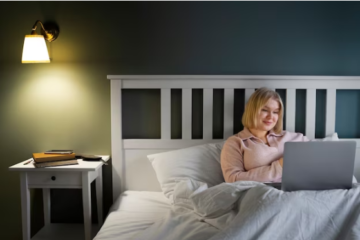Cushion covers are an essential part of home décor, providing both comfort and aesthetic appeal. However, they are often susceptible to stains, which can tarnish their appearance and diminish their lifespan. Understanding how to effectively remove various stains can help keep your cushion covers looking fresh and pristine. This guide will walk you through different methods for tackling a variety of stains, ensuring your covers remain as good as new.
General Tips for Stain Removal
- Act Quickly
Address stains as soon as they occur. The longer you wait, the more likely the stain will set into the fabric, making it more difficult to remove. Immediate action can prevent the stain from seeping deeper into the material. - Test Cleaning Solutions
Before applying any cleaning agent, always test it on a hidden area of the cushion cover. This ensures the solution won’t damage or discolor the fabric. This is especially important for delicate materials like silk or velvet. - Blot, Don’t Rub
When dealing with a stain, gently blot the affected area with a clean cloth. Avoid rubbing, as it can push the stain deeper into the fibers or spread it further, making removal harder. Blotting will help lift the stain without causing additional damage.
Removing Different Types of Stains
1. Food Stains
- Coffee and Tea
To remove coffee and tea stains, start by blotting the excess liquid with a clean cloth. Then, apply a solution of mild dish soap and water to the stain and blot again. Rinse with cold water and repeat the process if necessary. Laxhofur offers cotton cushion covers, rugs and ottoman stools that are durable and easy to clean, resistant to stains if treated quickly. - Grease and Oil
Grease and oil stains can be tough to remove. Start by sprinkling baking soda over the stain to absorb the oil. Then, mix dish soap with water and apply the mixture to the area. Blot the stain until it fades, and rinse thoroughly.
2. Drink Spills
- Wine and Juice
For wine or juice stains, a mixture of white vinegar and water works well. Blot the area with a cloth, then apply the vinegar solution. Blot again, rinse with cold water, and repeat if necessary for stubborn stains.
3. Ink Stains
- Pen Ink
Pen ink can be tricky, but rubbing alcohol can help. Dip a cotton ball in rubbing alcohol and blot the stain gently. Be careful not to saturate the fabric. Rinse with cold water, then check if the stain has lifted. Repeat if needed.
4. Sweat and Body Oils
- Dealing with Body Oils
Sweat and body oils can leave unsightly stains. To treat these, create a paste with baking soda and water. Apply the paste to the stain, let it sit for 15 minutes, then brush away the residue. Finally, wash the cushion cover according to its care instructions.
Specific Fabric Care
1. Cotton Cushion Covers
Washing Instructions
Cotton covers are typically easy to clean. Follow the care label instructions, which usually recommend machine washing in cold or warm water. Use a mild detergent, and avoid bleach unless specified by the manufacturer.
2. Linen Cushion Covers
Cleaning Techniques
Linen covers require more careful handling. Hand wash them in cool water with a gentle detergent. Avoid wringing or twisting the fabric, as it can cause creases. Iron linen covers while they are slightly damp to achieve the best finish.
3. Silk and Velvet Cushion Covers
Delicate Stain Removal
Silk and velvet are delicate materials that need special attention. For silk, use a mild detergent and cool water, gently applying the solution with a cloth. Velvet should either be treated with a dry-cleaning solution or taken to a professional cleaner to avoid damage.
Homemade Stain Removal Solutions
- Baking Soda and Vinegar
A combination of baking soda and vinegar can tackle many stains. Sprinkle baking soda on the stain, then spray with a mix of equal parts vinegar and water. Blot gently, and rinse thoroughly with water. - Lemon Juice and Salt
Lemon juice and salt work wonders on white or light-colored fabrics. Apply lemon juice directly to the stain, sprinkle salt over it, and let it sit for a few hours before washing the cover. - Dish Soap and Water
A simple dish soap and water solution is effective for general stains. Mix a few drops of dish soap in water, apply to the stain, and blot with a cloth. Rinse and repeat as needed.
Commercial Stain Removers
- Choosing the Right Product
When selecting a commercial stain remover, make sure it’s suitable for the fabric of your cushion cover. Read the product’s instructions to ensure compatibility with the material and the type of stain you’re tackling. - How to Use Stain Removers
Follow the manufacturer’s directions for applying commercial stain removers. Usually, this involves applying the product to the stain, letting it sit for a few minutes, and then blotting or rinsing as directed.
Preventing Future Stains
- Using Fabric Protectors
Applying a fabric protector can help repel stains and make cleaning easier in the future. Follow the application instructions carefully and reapply the protector periodically for continued protection. - Regular Cleaning Routine
Establishing a regular cleaning schedule can help prevent stains from setting. Vacuum your cushion covers regularly and address spills immediately to keep your cushions looking their best.
Conclusion
Removing stains from cushion covers doesn’t have to be a difficult task. By addressing stains promptly and using the appropriate methods, you can maintain the appearance and longevity of your cushion covers. Whether you choose to use homemade remedies or commercial stain removers, the key is to select the right approach for the fabric and type of stain. With these effective stain removal tips, your cushion covers will continue to look fresh and vibrant.
FAQs
Q1: How do I remove stubborn stains from cushion covers?
For stubborn stains, try using a combination of methods or consult a professional cleaner. Always test new cleaning solutions on a small, hidden area of the fabric first.
Q2: Can I use bleach on all types of cushion covers?
Bleach should only be used on white or colorfast fabrics. It can cause damage or discoloration on other types of fabric.
Q3: What should I do if a stain doesn’t come out?
If a stain persists after several cleaning attempts, it may be time to seek professional cleaning services or consider replacing the cushion cover.
Q4: Are there any natural alternatives to commercial stain removers?
Yes, natural options like baking soda, vinegar, lemon juice, and salt can be effective on various stains and are often gentler on fabrics.
Q5: How often should I clean my cushion covers to prevent stains?
Regular cleaning, combined with immediate attention to spills, can help prevent stains. Establish a routine based on your fabric type and household needs to keep your cushion covers looking their best.



